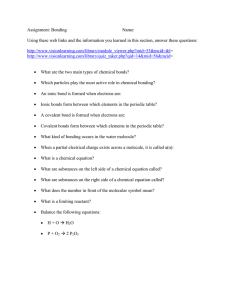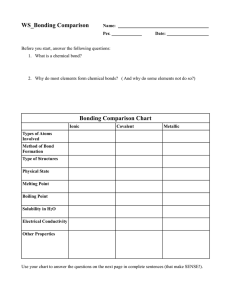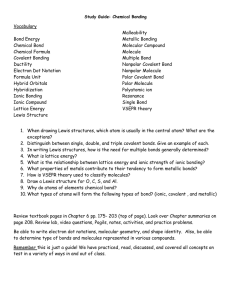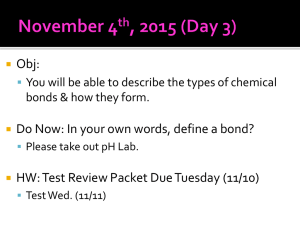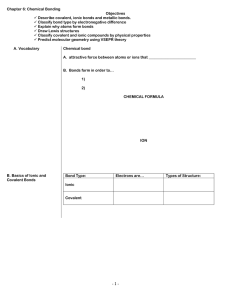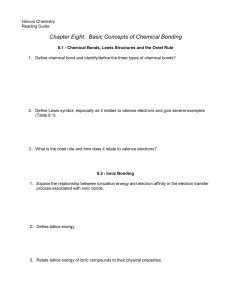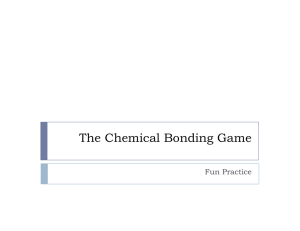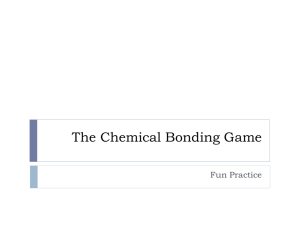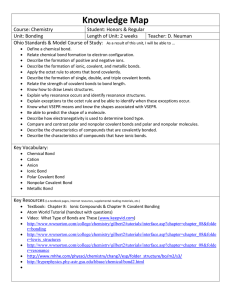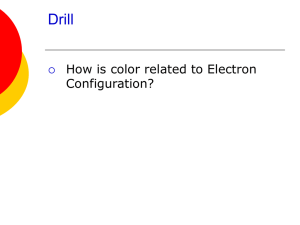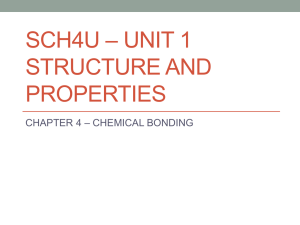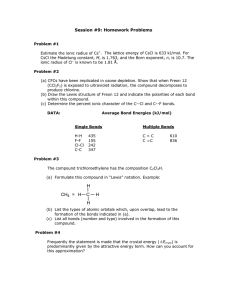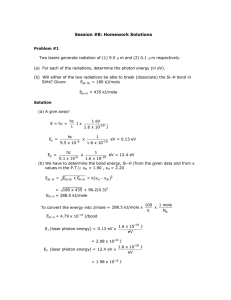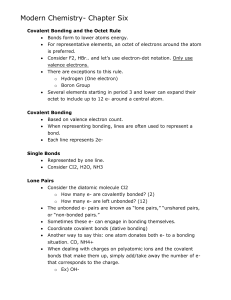AP Chemistry Dr. Wilhelm Chapter Eight Reading Guide: Bonding
advertisement
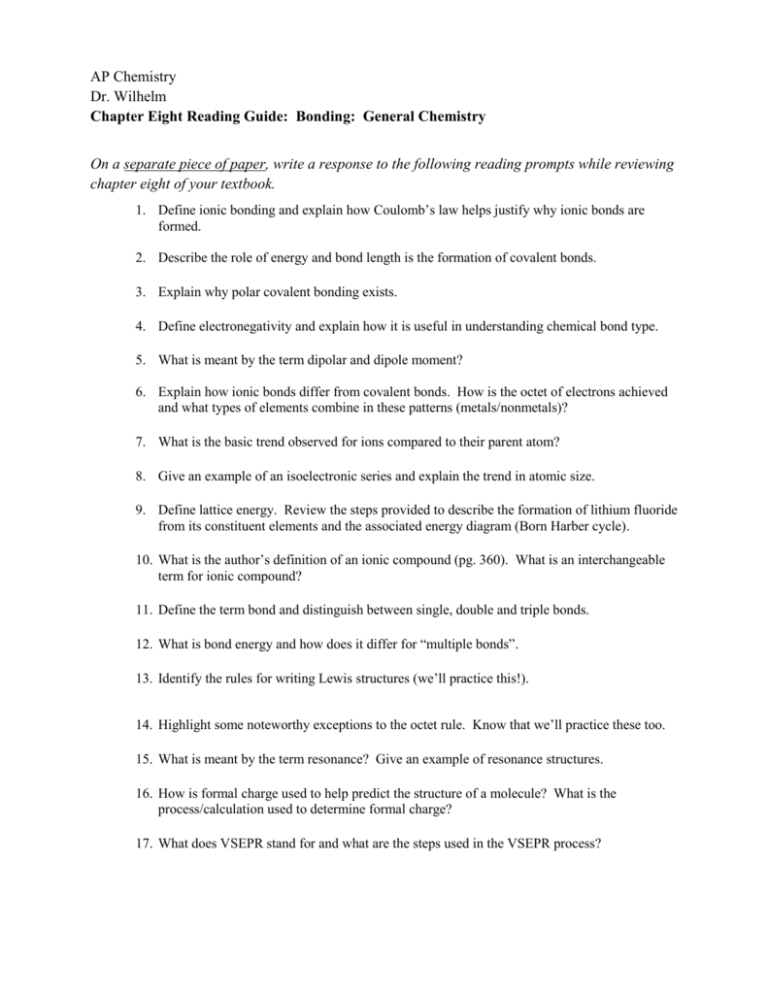
AP Chemistry Dr. Wilhelm Chapter Eight Reading Guide: Bonding: General Chemistry On a separate piece of paper, write a response to the following reading prompts while reviewing chapter eight of your textbook. 1. Define ionic bonding and explain how Coulomb’s law helps justify why ionic bonds are formed. 2. Describe the role of energy and bond length is the formation of covalent bonds. 3. Explain why polar covalent bonding exists. 4. Define electronegativity and explain how it is useful in understanding chemical bond type. 5. What is meant by the term dipolar and dipole moment? 6. Explain how ionic bonds differ from covalent bonds. How is the octet of electrons achieved and what types of elements combine in these patterns (metals/nonmetals)? 7. What is the basic trend observed for ions compared to their parent atom? 8. Give an example of an isoelectronic series and explain the trend in atomic size. 9. Define lattice energy. Review the steps provided to describe the formation of lithium fluoride from its constituent elements and the associated energy diagram (Born Harber cycle). 10. What is the author’s definition of an ionic compound (pg. 360). What is an interchangeable term for ionic compound? 11. Define the term bond and distinguish between single, double and triple bonds. 12. What is bond energy and how does it differ for “multiple bonds”. 13. Identify the rules for writing Lewis structures (we’ll practice this!). 14. Highlight some noteworthy exceptions to the octet rule. Know that we’ll practice these too. 15. What is meant by the term resonance? Give an example of resonance structures. 16. How is formal charge used to help predict the structure of a molecule? What is the process/calculation used to determine formal charge? 17. What does VSEPR stand for and what are the steps used in the VSEPR process?



